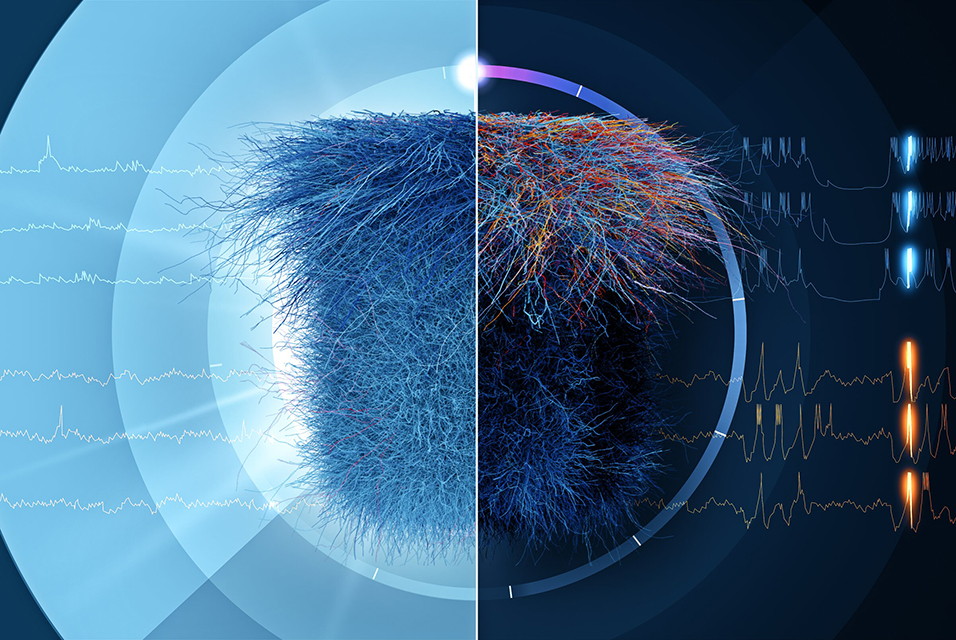LAUSANNE.- The thalamus and thalamic reticular nucleus are situated at the heart of the mammalian brain and are known to play a key role in a wide range of functions, including the transmission of sensory information to the cortex and the transition between brain states such as sleep and wakefulness.
However, alterations in thalamic neuron firing and interconnectivity have been linked to pathological brain rhythms and changes in the rhythmic brain waves that occur during sleep, which have been observed in disorders such as schizophrenia, neurodevelopmental disorders, attention deficit hyperactivity disorder, and Alzheimer's disease.
The new model developed by Blue Brain is the first to capture the complex shapes and biophysical properties of 14,000 neurons connected by 6 million synapses. It can be used to explore the structural and functional complexity of neural circuits. The model also replicates multiple independent network-level experimental findings across different brain states, and provides a novel unifying cellular and synaptic account of spontaneous and evoked activity in both wakefulness and sleep.
One of the key findings of the study is that inhibitory rebound, a process that helps to regulate the activity of nerve cells, produces an enhancement of thalamic responses during wakefulness at certain frequencies. The model also showed that thalamic interactions generate the characteristic waxing and waning of spindle oscillations, the rhythmic brain waves seen during sleep, and that changes in the excitability of thalamic cells control the frequency and occurrence of these spindle oscillations.
"This is particularly relevant to interpreting the presence or absence of spindles in different brain disorders," emphasizes first author Dr. Elisabetta Iavarone. "This approach yielded the first morphologically and biophysically-detailed model of a thalamic microcircuit, demonstrating that the modeling strategy Blue Brain developed for cortical microcircuitry can be applied to other brain regions," adds Blue Brain Project Founder and Director, Prof. Henry Markram.
"Computer models and simulations can facilitate the integration and standardization of different sources of experimental data, highlight key missing experiments, and at the same time provide a tool to test hypotheses and explore the structural and functional complexity of neural circuits," explains Prof. Sean Hill, co-director of the Blue Brain Project and the Scientific Director of the Krembil Centre for Neuroinformatics.
The research, published in a front cover paper in the latest issue of Cell Reports, represents a significant step forward in understanding the role of the thalamus and thalamic reticular nucleus in brain function and dysfunction, and the model developed by the Blue Brain Project at
EPFL is now accessible for researchers to use in their own studies.
"This model is openly available and provides a new tool to interpret spindle oscillations and test hypotheses of thalamoreticular circuit function and dysfunction across different network states in health and disease," says Hill.









